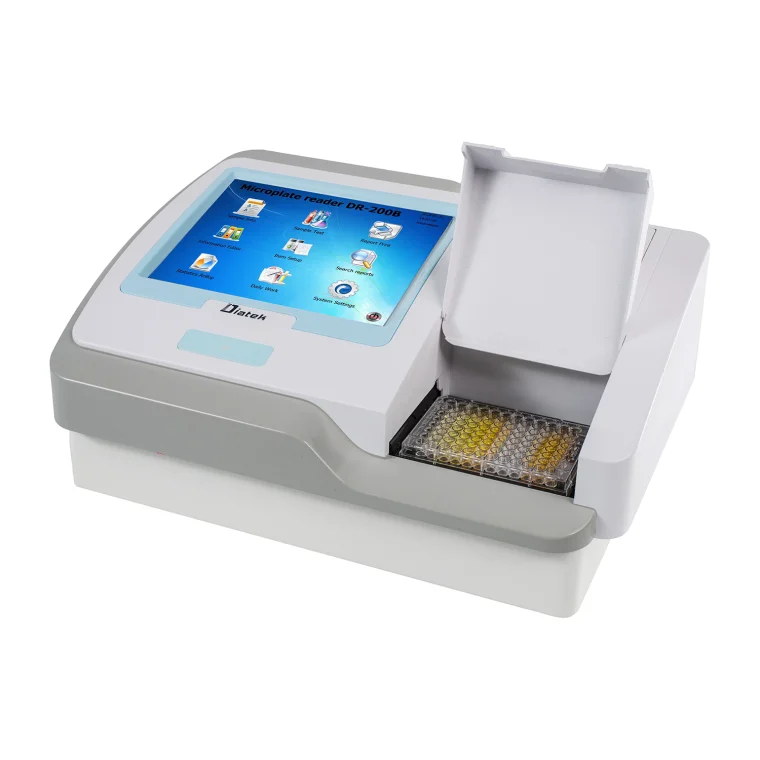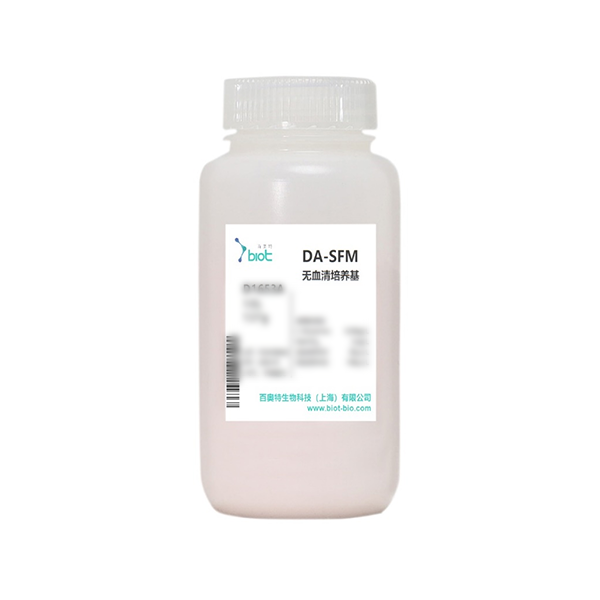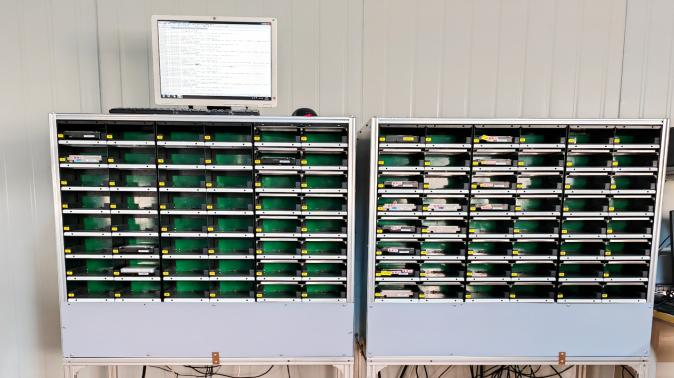Introduction to Dyeing Machine Manufacturers
Step into the world of dyeing machine manufacturers, where innovation and obsolescence dance a delicate tango. These unsung heroes of the textile industry have played a pivotal role in transforming fabric coloring processes for decades. From their humble beginnings to their current struggles, this is a tale that showcases the triumphs and tribulations of an ever-evolving sector.
Picture it: a time when manual labor was at the forefront of every dyeing process. But then came the rise of dyeing machine manufacturers, propelling efficiency to new heights and revolutionizing textile production as we knew it. With their cutting-edge technology and unwavering dedication, they became pioneers in an industry hungry for progress.
Innovation quickly became synonymous with these forward-thinking manufacturers. They introduced automated systems that could handle larger volumes of fabric with unparalleled precision. Each iteration brought improvements like enhanced temperature control, reduced water consumption, and faster drying times ? all designed to optimize productivity while minimizing environmental impact.
As technology advanced by leaps and bounds, so did dyeing machines themselves. The integration of computer-controlled systems allowed for more accurate color matching than ever before. Sophisticated sensors monitored variables such as pH levels and tension during processing, ensuring consistent results with each batch produced.
But innovation has its consequences too ? particularly when it comes to technology advancements within an industry once dominated by traditional methods. While dyeing machine manufacturers soared on the wings of progress, changes in consumer preferences began shifting market demands towards sustainable materials and natural dyes.
And so began the decline of these once-mighty giants: caught between outdated manufacturing practices no longer aligned with eco-conscious consumers' desires and increased competition from alternative coloring techniques like digital printing or plant-based dyes.
Yet amidst adversity lies opportunity; adaptation is key to survival in any evolving landscape. Dyeing machine manufacturers must reimagine themselves as facilitators rather than mere producers ? embracing sustainability initiatives while maintaining their commitment to quality craftsmanship.
The Rise of Dyeing Machine Manufacturers
In the early days of textile production, dyeing fabrics was a labor-intensive process. Each piece had to be immersed in vats of dye, resulting in inconsistent color distribution and prolonged production times. However, with the rise of dyeing machine manufacturers, this all changed.
Dyeing machine manufacturers revolutionized the textile industry by introducing automated systems that could efficiently and uniformly dye large quantities of fabric. These machines not only increased productivity but also improved the quality and consistency of dyed textiles.
One key innovation that contributed to the success of these manufacturers was the development of programmable controls. This allowed for precise control over various parameters such as temperature, pressure, and duration, ensuring optimal results for different types of fabrics.
Another significant advancement was the incorporation of advanced sensors into these machines. These sensors enabled real-time monitoring and adjustment during the dyeing process, minimizing errors and reducing waste.
As demand for dyed fabrics grew steadily over time, so did competition among manufacturers. This led to further innovations such as faster cycle times, higher capacity machines, and eco-friendly options utilizing sustainable dyes and processes.
The continuous advancements in technology propelled dyeing machine manufacturers to new heights within the industry. Their ability to cater to evolving consumer preferences while maintaining high-quality standards solidified their position as leaders in textile manufacturing.
Stay tuned for our next blog post where we discuss how technology advancements have affected dyeing machines!
Innovations in the Industry
Innovations in the Industry have played a crucial role in shaping the landscape of Dyeing Machine Manufacturers. Over the years, these manufacturers have continuously strived to stay ahead of the curve by introducing new technologies and processes that enhance efficiency, reduce costs, and improve overall product quality.
One notable innovation is the development of automated dyeing machines. These cutting-edge machines are equipped with advanced control systems that enable precise temperature and pressure regulation, resulting in more consistent and uniform dyeing results. This not only saves time but also reduces wastage of resources such as water and dyes.
Another significant advancement is the integration of digital technology into dyeing machines. With the advent of Internet of Things (IoT) technology, manufacturers can now remotely monitor machine performance, analyze data in real-time, and even make necessary adjustments or troubleshoot issues from anywhere in the world.
Furthermore, there has been a growing emphasis on sustainability within the industry. Many dyeing machine manufacturers have embraced eco-friendly practices by incorporating features like water recycling systems and energy-efficient components into their machines. This not only helps reduce environmental impact but also enables cost savings for textile producers.
Moreover, innovative techniques such as air flow dyeing have emerged as an alternative to conventional methods. By utilizing airflow instead of large volumes of water to circulate dyes through fabrics, this technique significantly reduces water consumption while maintaining high-quality results.
Additionally, advancements in software solutions have revolutionized process optimization within dyeing machine manufacturing. Through sophisticated algorithms and predictive analytics capabilities integrated into software platforms specifically designed for this industry, manufacturers can optimize various parameters such as recipe formulation for different fabric types or batch sizes.
To remain competitive amidst rapid technological advancements and changing market demands requires continuous innovation from Dyeing Machine Manufacturers. Those who embrace emerging technologies will be better positioned to meet customer expectations for faster turnaround times while reducing costs and minimizing environmental impact.
The Effects of Technology Advancements on Dyeing Machines
Technology advancements have had a profound impact on the dyeing machine manufacturing industry. With each new innovation, machines become more efficient, precise, and automated. These advancements not only improve the overall performance of dyeing machines but also enhance their capabilities in terms of color accuracy and fabric handling.
One significant effect of technology advancements is the increased control and customization options available to manufacturers. Dyeing machines now offer precise temperature controls, adjustable dye flow rates, and programmable settings for different types of fabrics. This level of control allows manufacturers to achieve consistent results with minimal errors or variations.
Automation has also revolutionized the industry by reducing human intervention in the dyeing process. Automated systems can handle multiple batches simultaneously, monitor crucial variables like pH levels and chemical dosage accurately, and even detect defects or irregularities in real-time. This automation not only improves productivity but also reduces labor costs significantly.
Additionally, technology advancements have resulted in improved energy efficiency within dyeing machines. Energy-saving features such as heat recovery systems and optimized water usage help reduce environmental impact while lowering operational costs for manufacturers.
Furthermore, digitalization has transformed how data is collected and analyzed within the dyeing machine manufacturing industry. Real-time monitoring systems provide valuable insights into production processes, allowing manufacturers to identify inefficiencies quickly and make informed decisions for optimization.
Technology advancements have undoubtedly revolutionized the dyeing machine manufacturing industry by enhancing precision, efficiency, automation capabilities while reducing environmental impact. As technology continues to evolve at an unprecedented pace, it will be fascinating to see what further innovations lie ahead for this dynamic sector.
Changes in Consumer Preferences and Market Demands
Consumer preferences and market demands play a pivotal role in shaping the trajectory of any industry, including the dyeing machine manufacturing sector. As technology has advanced and new alternatives have emerged, consumers' expectations have evolved, driving significant changes in this once-thriving industry.
In the past, consumers primarily sought out dyeing machines that were efficient and reliable. However, as environmental concerns gained prominence and sustainable practices became more important to consumers, their preferences shifted towards machines that offered eco-friendly solutions. This change forced manufacturers to adapt by incorporating environmentally friendly features into their products.
Furthermore, with globalization and increased competition from overseas markets, cost-effectiveness has become another crucial factor influencing consumer choices. Manufacturers now face pressure to produce high-quality machines at competitive prices while maintaining profitability.
Additionally, there is an increasing demand for customization options as businesses seek unique solutions tailored to their specific needs. Dyeing machine manufacturers must be agile enough to offer flexible configurations and adapt quickly to meet customers' changing requirements.
Moreover, technological advancements such as automation and digital integration have revolutionized the dyeing process itself. Consumers now expect machines equipped with cutting-edge technologies that improve efficiency, reduce water consumption, optimize color consistency, enhance product quality control measures - all while minimizing human error.
To stay relevant amidst these changing consumer preferences and market demands requires constant innovation and adaptation on the part of dyeing machine manufacturers. Those who fail to keep up risk falling behind or even becoming obsolete in this rapidly evolving landscape.
As we navigate through these transformative times within the industry's landscape marked by shifting customer preferences an unpredictable market dynamics ? one thing remains clear: only those manufacturers who can anticipate trends early on will thrive in this ever-changing environment.
The Decline of Dyeing Machine Manufacturers
As the years went by, dyeing machine manufacturers faced an uphill battle. The industry that once thrived on innovation and demand started to see a decline in their fortunes. The rapid advancements in technology played a significant role in this downfall.
With each passing day, new technologies emerged, offering faster and more efficient methods for dyeing textiles. These new machines boasted features like automated processes, reduced energy consumption, and improved precision. Unfortunately, many traditional dyeing machine manufacturers struggled to keep up with these changes.
Consumer preferences also shifted over time. As sustainability became a growing concern for shoppers around the world, there was an increasing demand for eco-friendly alternatives. Dyeing machines that used excessive amounts of water or harsh chemicals fell out of favor.
The market demands were changing rapidly as well. Fast fashion became the norm, with consumers seeking trendy clothes at affordable prices. This put pressure on dyeing machine manufacturers to produce higher volumes in shorter turnaround times.
Amidst these shifts in technology and consumer preferences, many dyeing machine manufacturers failed to adapt quickly enough. Their outdated machinery couldn't compete with newer models that offered superior performance at lower costs.
However, not all hope was lost for those willing to embrace change. Some forward-thinking companies recognized the need to evolve their business models and invest in research and development initiatives aimed at creating sustainable solutions.
By diversifying their product offerings and incorporating advanced technologies into their operations, some dyeing machine manufacturers managed to stay afloat amidst the decline.
Adapting to a Changing Industry: Strategies for Survival
In the ever-evolving world of manufacturing, staying ahead of the game is crucial for any dyeing machine manufacturer. As technology advances and market demands shift, those who fail to adapt often find themselves left behind. So, what are some strategies that can help these manufacturers not only survive but thrive in this rapidly changing industry?
First and foremost, embracing innovation is paramount. This means constantly seeking out new technologies and techniques that can enhance the performance and efficiency of dyeing machines. Whether it's implementing automation processes or investing in research and development, manufacturers must be willing to push boundaries and explore possibilities.
Additionally, building strong partnerships with suppliers and customers is essential. By collaborating closely with suppliers, manufacturers can ensure a steady supply of high-quality components while also benefiting from their expertise. Similarly, understanding customer needs and preferences allows manufacturers to tailor their products accordingly, offering solutions that meet specific requirements.
Furthermore, diversifying product offerings can be a smart move for survival in this competitive landscape. Instead of solely focusing on traditional dyeing machines, exploring related areas such as textile testing equipment or eco-friendly technologies could open up new avenues for growth.
Moreover, investing in employee training and skill development cannot be overlooked. With advancements in technology comes the need for an adaptable workforce capable of handling complex machinery effectively. By providing ongoing training programs and fostering a culture of continuous learning within the organization, manufacturers can equip their employees with the necessary skills to navigate industry changes successfully.
Lastly - but certainly not least - harnessing digital marketing strategies is vital in today's digitally driven world. Establishing a strong online presence through an optimized website, engaging social media platforms, targeted advertising campaigns ensures maximum visibility among potential customers worldwide.
Conclusion: The Future of Dyeing Machine Manufacturers
As we reflect on the rise and fall of dyeing machine manufacturers, it is clear that innovation and adaptability are key factors in surviving in an ever-changing industry. While technology advancements have revolutionized the dyeing process, they have also posed challenges to traditional manufacturers.
The future of dyeing machine manufacturers lies in their ability to embrace new technologies and cater to changing consumer preferences and market demands. Companies must stay ahead of the curve by investing in research and development, collaborating with tech-savvy partners, and continuously upgrading their machinery.
Additionally, sustainability will play a crucial role in shaping the future of this industry. As environmental concerns continue to grow, dyeing machine manufacturers must focus on developing eco-friendly solutions that minimize water consumption, energy usage, and chemical waste.
Furthermore, diversification can be a game-changer for struggling companies. Exploring new markets or expanding into related industries can provide opportunities for growth and longevity.
In conclusion, while some may view the decline of dyeing machine manufacturers as inevitable due to technological advancements and changing market dynamics, there is still hope for those willing to adapt. By embracing innovation, prioritizing sustainability efforts, diversifying their offerings, and staying attuned to consumer needs ? these companies can carve out a thriving future amidst uncertainty.
So let us raise our glasses (figuratively speaking) to the resilience of dyeing machine manufacturers who dare to reinvent themselves time after time! Cheers!
aleetex
aleetex@aleetex.com




